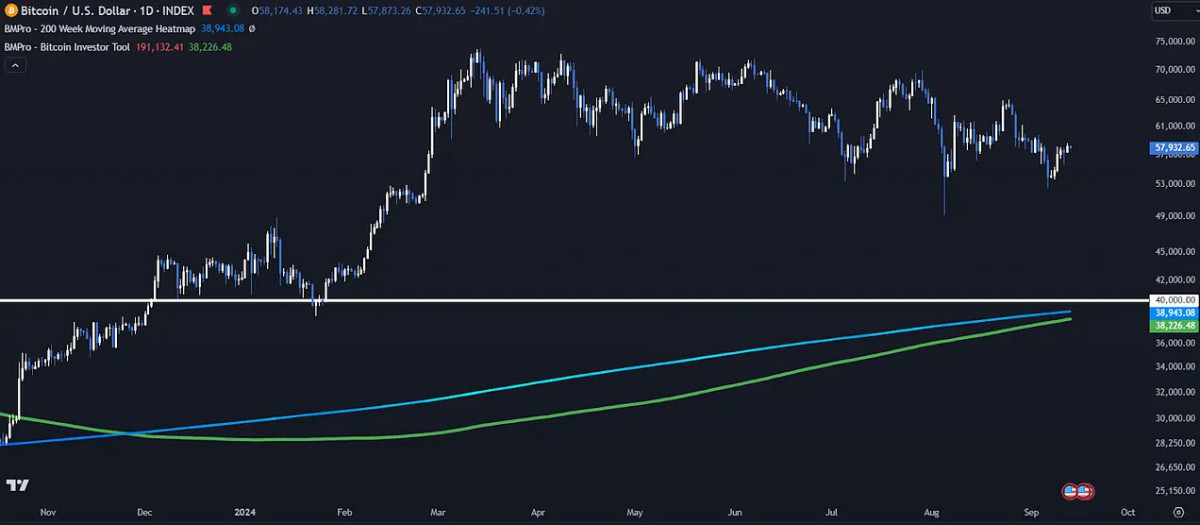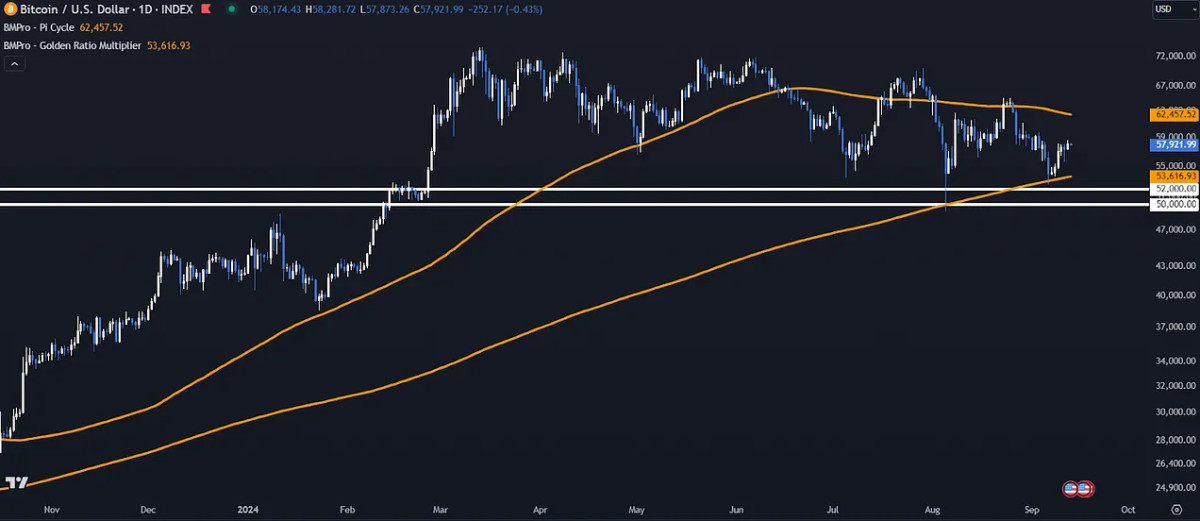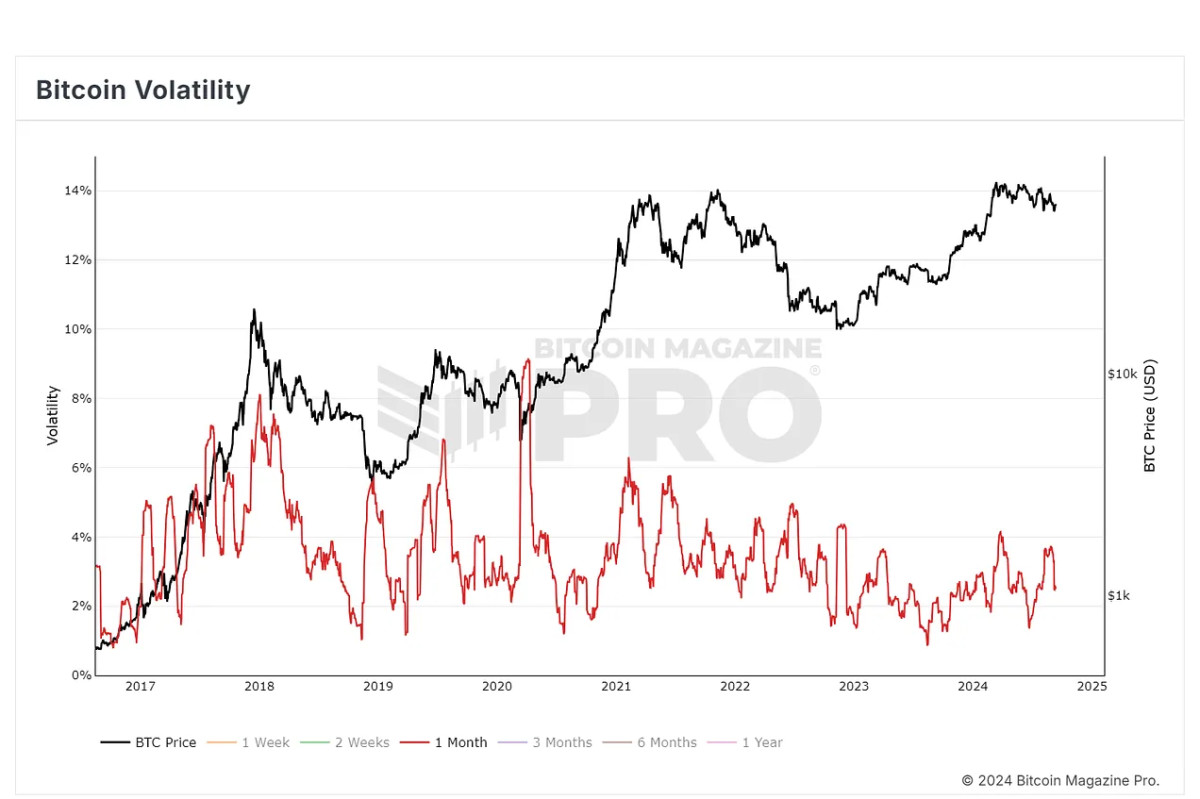Bitcoin’s recent price movements have led to concerns among investors about what could happen next. However, by looking at key indicators such as the 200-week moving average, Pi Cycle Top Indicator, and the Golden Ratio Multiplier, we can gain insight into potential support and resistance levels for Bitcoin.
Tends to a bearish course?
Over the past few weeks, Bitcoin’s price has fluctuated, reaching as high as $53,000 before stabilizing in the middle of our newly formed $50,000 to $60,000 range. If this bearish price action continues and the price breaks to lower lows, 200-week moving average heatmap (blue line), a historical critical support level, is currently close to $39,000 but is rapidly approaching $40,000 (white line). This round psychological level also corresponds to the Bitcoin Investor tool (green line), which has also converged with the 200-week moving average, could serve as potential downside targets.

Nearby targets
Above the current price, there are several important levels closer to the current price that investors should keep an eye on. The Pi Cycle Top Indicator (top orange line) suggests a key resistance level around $62,000, based on the 111-day moving average. The Golden Ratio Multiplier (bottom orange line) indicates that the 350-day moving average, currently around $53,000, has been a solid support level during this market cycle, especially as it is close to the technical support of $52,000 and the significant psychological support of $50,000.

More Chop?
In the short term, Bitcoin could very well continue to fluctuate between the low $50,000 region and the $60,000 resistance, similar to the range we had formed between $70,000 and $60,000 that led to fairly stagnant price action for the majority of 2024. Despite recent downturns, the long-term outlook for Bitcoin is still promising. Historically, Bitcoin has experienced similar periods of fluctuating price before eventually reaching new highs. However, this process could take some time, potentially weeks or even months, before a sustainable trend reversal occurs after periods of low volatility.

Conclusion
For long-term investors, it is important to remain calm and not be influenced by daily price changes. Over-trading often leads to bad decisions and losses, and the key is to stick to a strategy, whether it is accumulation at support levels or taking profits at resistance.
Bitcoin’s recent price performance has not been ideal, but with some basic technical analysis and a clear understanding of support and resistance levels, investors can prepare and react instead of overreacting to natural market fluctuations.
For more in depth information on this topic, check out our recent YouTube video here: Bitcoin Price Action: What to Expect Next
